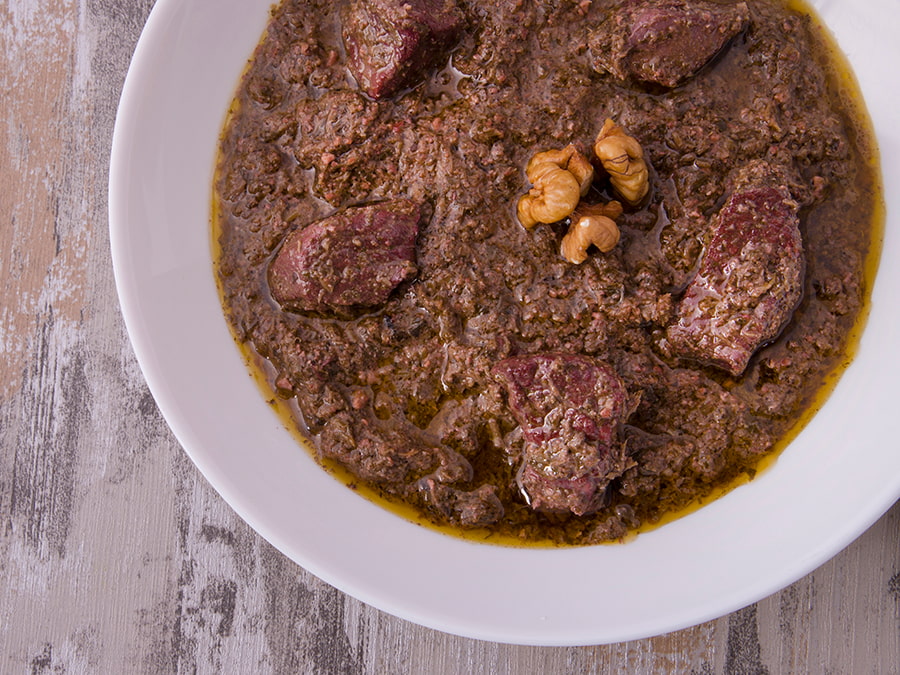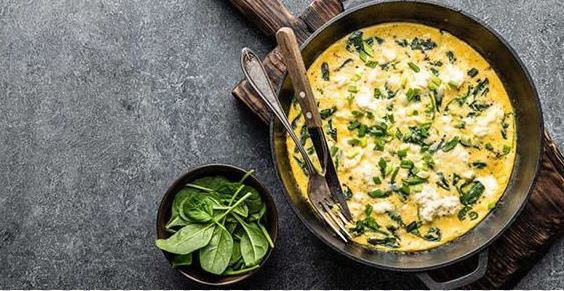
This post is also available in:
 English
English  فارسی
فارسی  العربية
العربية
10 Tricks to Reduce Bitterness in Food Restaurant-Style
One of the common problems encountered in cooking is the bitterness of food. Bitterness can result from improper use of certain ingredients, overcooking, or specific combinations. In this article, the skilled chefs of the Best Tourist Restaurant in Rasht examine various strategies to reduce the bitterness of different foods. Stay with us.
Types of Tricks to Reduce Bitterness in Food
The expert chefs at the Best Tourist Restaurant in Rasht point to the following methods for reducing food bitterness:
- Using acidic ingredients
- Adding sugar or sweeteners
- Soaking and rinsing ingredients
- Using fats
- Adding spices and aromatic herbs
- Reducing cooking temperature and controlling heat time
- Combining bitter ingredients with other foods
- Using potatoes to absorb bitterness
- Roasting or sautéing ingredients
- Removing the bitter parts of ingredients
Using Acidic Ingredients
Professional chefs at the Best Tourist Restaurant in Rasht believe that acidic ingredients such as lemon juice, vinegar, or even yogurt can help reduce food bitterness. Acids balance out the bitter taste and enhance the final flavor of the dish. These ingredients are particularly effective in foods containing naturally bitter compounds. For example, adding lemon juice to bitter vegetables like broccoli or spinach not only reduces their bitterness but also adds a fresh and pleasant flavor to the dish. Additionally, in stews such as eggplant stew, adding a small amount of yogurt or vinegar helps reduce bitterness and creates balance in the overall taste of the dish.
- For bitter vegetables: Adding a little apple cider vinegar or lemon juice during cooking can reduce their bitterness.
- For stews: If a stew like eggplant stew turns out bitter, add a little yogurt or lemon juice.
Adding Sugar or Sweeteners
Sugar is one of the classic ways to reduce food bitterness. Of course, the amount should be controlled to avoid an undesirable change in flavor. Sweeteners such as sugar, honey, or natural syrups can balance bitterness. This method is especially useful for very bitter foods. For example, in preparing bitter coffee, adding a little sugar or honey can soften its taste. Similarly, in foods like bitter pomegranate paste or certain sauces, adding a small amount of sugar creates a balanced flavor. Care must be taken not to use too much sweetener, as this can spoil the final taste of the dish.
- For bitter coffee: Adding a little sugar or honey can balance the bitterness.
- For bitter foods: In foods such as bitter pomegranate paste, add a little sugar or grape syrup.
Soaking and Rinsing Ingredients
Some bitter ingredients can be rescued from bitterness by soaking them in water and then rinsing.
- Eggplant: Place eggplant slices in salted water and rinse after 30 minutes.
- Walnuts: Soak bitter walnuts in water for several hours and then rinse.
Using Fats
Fats can play an effective role in reducing food bitterness, as they create a fatty layer in the mouth that blocks some bitter flavors and prevents them from being detected by the taste receptors on the tongue. This property is especially useful in foods where bitter flavors dominate, such as bitter vegetables or certain medicinal herbs. Fats absorb and moderate strong flavors, balancing the overall taste of the dish and thus reducing bitterness. For this purpose, oils, butter, or various plant- and animal-based fats can be used.
Adding Spices and Aromatic Herbs
- Certain spices and aromatic herbs help mask bitterness in food.
- Ginger, cinnamon, and cumin: These spices reduce bitterness and create a pleasant flavor.
- Basil and cilantro: Suitable for balancing the taste of bitter dishes.
Reducing cooking temperature and controlling heat time

Professional chefs at the Best Tourist Restaurant in Rasht believe that reducing cooking temperature and controlling heat time can significantly help in reducing food bitterness. Many bitter compounds present in ingredients, especially bitter vegetables like okra or cabbage, become more active at high temperatures. Therefore, by lowering the cooking temperature and cooking longer at a gentle heat, these bitter compounds can be broken down or reduced.
Additionally, shorter exposure to heat, especially in methods like steaming or boiling, helps prevent the bitter taste from persisting, making the food tastier and milder. These methods help preserve the original flavor of the dish while reducing its bitterness.
Combining Bitter Ingredients with Other Ingredients
Sometimes, combining bitter ingredients with other foods can create a balanced flavor.
- Example: Mixing dark chocolate with milk or cream reduces its bitterness.
- Stews: Combining bitter stews with sour and sweet ingredients such as barberries or raisins can be effective.
Using Potatoes to Absorb Bitterness
Potatoes, as a natural absorbent, can effectively reduce the bitterness in foods. When potatoes are added to a dish, their starch helps absorb bitter compounds and remove them from the food. This is especially useful in dishes that have bitter flavors, such as certain bitter vegetables or meals that have accidentally become bitter.
To use this method, potato pieces can be added to the dish and allowed to absorb the bitterness during cooking, thereby moderating the flavor. After cooking, the potatoes can either be removed or, if desired, left in the dish for consumption.
Roasting or Sautéing Ingredients
Professional chefs at the Best Tourist Restaurant in Rasht also believe that some ingredients lose their bitterness when roasted or sautéed.
- For nuts and seeds: Roasting walnuts or almonds before use reduces their bitterness.
- For coffee: Coffee beans that are over-roasted tend to be more bitter, so roasting should be balanced.
Removing the Bitter Parts of Ingredients
Removing the bitter parts of ingredients is an effective way to reduce food bitterness. Many foods, including bitter vegetables, fruits, and some herbs, have parts that taste bitter, such as the skin, seeds, or outer sections. By removing these parts, the intensity of the bitterness can be greatly reduced.
- Example: In vegetables like okra or cabbage, cutting off the bitter parts or peeling can reduce bitterness.
- Fruits: In fruits such as watermelon or cucumber, removing seeds or peeling can help reduce bitterness.
These methods make the sweeter and milder flavors of the dish more prominent while reducing bitterness.
Conclusion
By using the above methods, food bitterness can be reduced, allowing you to enjoy its delicious flavors. Depending on the type of dish, try one or more of these tricks to achieve the best result. Following these tips not only improves the taste of the food but also enhances your cooking skills.
Do not miss this content
The Difference Between Adana Kebab and Koobideh Kebab
What to Do If Your Food Turns Sour?
روش تهیه فوتوچینی ایتالیایی با سس آلفردو
How to prepare step by step Ghimeh Nisar for the house + ...
Properties of fig fruit + how to prepare some items that ...
Try the recommended types of Gilani condiments
Which countries have the most delicious food in the world?
How to prepare Kal Kebab, a delicious and authentic Gilan...
How to Make Herbed Rice with Tuna or Pluten
Recipe for several types of food with green beans
طرز تهیه چلو گوشت مجلسی با طعمی لذیذ





